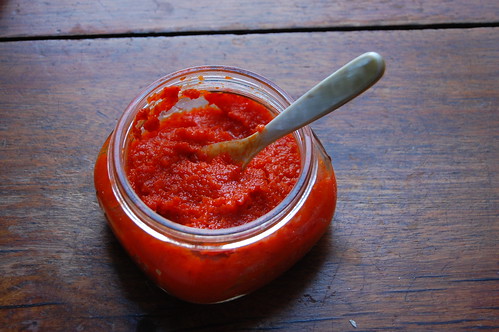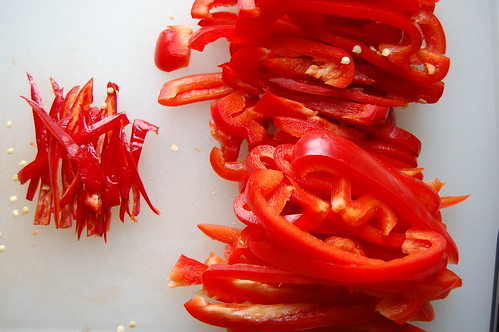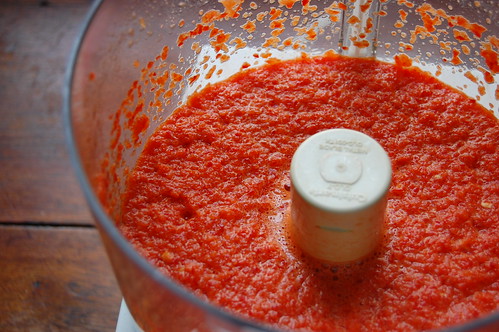
In Lebanon and Syria there is a preserving tradition known as mouneh. These traditional preserves were made throughout the summer and into the fall, and were a way of preserving food to eat in the winter. Some of these are ingredients that are very familiar to you - jams and fruits preserved in syrup, concentrated tomato pastes, while others may be unknown in much of the West. Things like carob and grape molasses, kishik (a powdery mixture made from fermented dried yogurt and bulgur), or qawarma, rich lamb meat preserved in its own fat (not unlike duck confit).

Then there is pepper paste, which is so ubiquitous one might not even consider it a mouneh, but a constant staple. There is a strong Armenian influence in the Levant, and many give credit to the spicy pepper pastes in the region to the Armenian influence. (Generally, Levantine people dislike fiery spicy foods, and so anything with a bit of bite to it is often influenced by Armenian cuisine or Aleppian influences).
I would say that every culture has their pepper paste, whether fiery gochuchang or sweet ajvar, and so it's not worth arguing over origins. The pepper paste I make is made in a traditional way and is very easy. Traditionally this would be dried in the sun but I choose to just cook it a bit longer (it can happily simmer undisturbed for a few hours), and you could also try drying it out in a low oven. The paste is sweet and only barely spicy. I found myself spreading it on bread and in sandwiches and just eating it straight out of a jar. Next time I'm going to talk about a very special kibbeh recipe that uses this pepper paste.

Red Pepper Paste
Use your judgement with the chili. The chili I used, despite my incorporating the seeds, wasn't very spicy, so I added a pinch of Aleppo pepper flakes at the end.
3 large meaty red bell peppers, seeded and sliced into strips
1 small red chili, flesh sliced and a few seeds reserved
1/2 teaspoon salt
1/2 teaspoon sugar
1 teaspoon olive oil
1. Place the ingredients in a food processor and process until smooth.
2. Place a skillet over medium heat. Add the pepper puree and let bubble over medium heat, stirring occasionally until most of the moisture is evaporated.
3. As the pepper paste starts to concentrate, reduce the heat so that it is cooking more and more slowly. Let the mixture cook down until it is very thick, this can take up to 2 to 2 1/2 hours. Check on the mixture frequently to make sure it is not burning, but it really shouldn't need much stirring or other attention. Toward the end of cooking taste for seasoning, see if it needs more salt or spice.
4. Scrape the paste into a jar. Pour a film of oil over it if you plan to keep it for a while. Store in the refrigerator.

I am interested by this recipe, I don't know it. Besides it's easy to prepare. thanks
ReplyDeleteBeautiful! It sounds addictive.
ReplyDeleteYum! This looks so good! I'm new to your site and really enjoy all of the great recipes.
ReplyDeleteYummy! I miss the summer!
ReplyDeleteThis sounds like a great condiment... I can't wait to try this!!
ReplyDeleteThis looks like a great recipe and I will have a go this summer. What would be your estimate on time to keep in the fridge?
ReplyDeletethanks for this - its interesting to hear about how other countries preserve food, there is always so much we can learn eh! must try this recipe soon...
ReplyDelete